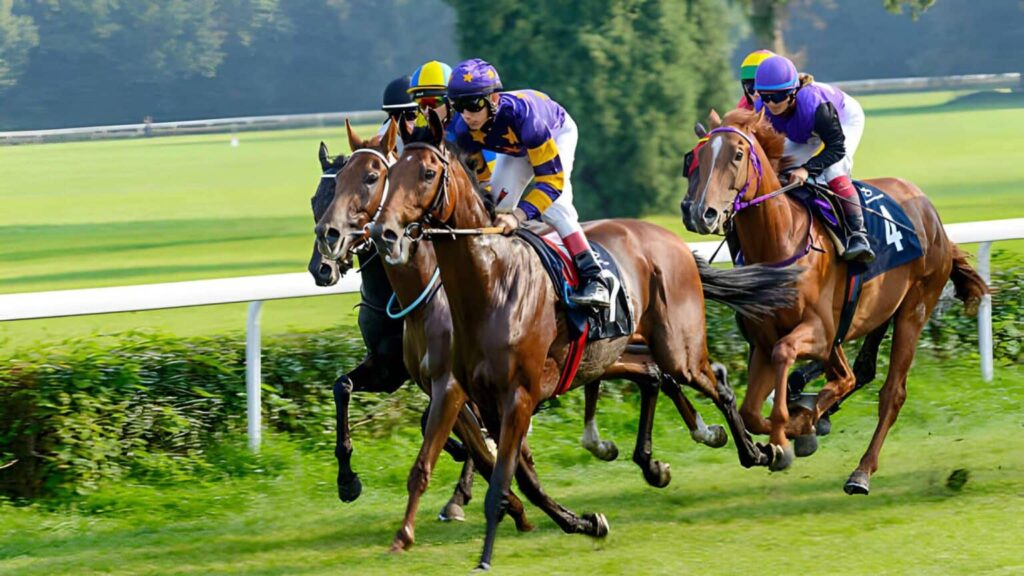Introduction
Horse racing combines horses’ grace with their jockeys’ skill to captivate both ardent fans and seasoned jockeys. Although speed is essential, the race also calls on strategy, timing, and agility. We review the subtle tactics in this book to help your horse go from the starting gate to the finish line. Every action you make affects the result, from knowing the track’s terrain to positioning yourself strategically within the pack.
It becomes crucial to time your energy conservation and acceleration bursts. Success requires preparing for potential roadblocks and changing course as necessary. However, based on communication and trust, the relationship between a horse and rider transcends physical ability. When these components come together, horse racing turns into an exciting dance to the finish line.
Understanding the Terrain
Before the race, acquainting yourself with the track is paramount. Each racecourse boasts distinct features, from the surface texture to the curvature of turns and potential obstacles. Whether dirt, turf, or synthetic, the track type profoundly influences your horse’s performance. For instance, a horse adept at navigating turf may find its rhythm disrupted on a dirt track. Therefore, understanding the terrain enables you to customize your approach, maximizing your horse’s strengths and mitigating weaknesses. By studying the track intricacies, you can refine your strategy to navigate challenges during the race, ensuring your horse is primed for success when the starting gate opens.
Strategic Positioning
You must familiarize yourself with the track before the race. Every racetrack has unique characteristics, ranging from the surface roughness to the contours of the corners and possible hazards. The turf, dirt, or synthetic track dramatically impacts how well your horse performs. For example, a skilled turf horse might need help maintaining rhythm on a dirt track. Consequently, you may tailor your approach to your horse’s strengths and minimize his limitations by being aware of the terrain. You can ensure your horse is ready for success from the minute the starting gate opens by learning the nuances of the track and refining your strategy to handle any obstacles that may arise during the race.
Timing is Everything
In horse racing, timing is crucial and frequently separates success from failure. As the race progresses, awareness is vital; pay close attention to your horse’s cadence and energy. Watch for subtle cues, such as increased muscle tension or a faster gait, indicating accelerating preparation. When the opportunity presents itself, don’t hesitate to take it. With a well-timed burst of speed, you can unleash your horse’s untapped ability and use the element of surprise to outmaneuver unwary opponents. Gaining the upper hand on the racetrack requires mastering the art of time in this delicate ballet of expectation and execution.
Strategic Maneuvers
In a field where competition is fierce, it’s critical to be ready for unforeseen difficulties and problems. The racetrack can present a variety of obstacles that call for rapid thinking and decisive action, such as narrow curves and congested lanes. You can have a significant advantage over your rivals by foreseeing possible obstacles and organizing your moves appropriately. Adaptability is the key to remaining ahead of the group, whether making a daring outside pass to gain ground or hugging the rail to preserve energy.
Mind over Matter
Physical strength is crucial in horse racing, but mental toughness is just as vital. As a rider, your capacity to maintain composure and focus under duress might affect how well your horse performs. Throughout the race, keep an eye on your horse’s mood and emotions and, where necessary, offer comfort and encouragement. By being composed and self-assured, you can inspire your horse to give its all right up until the very end.
Training and Preparation
Every successful racehorse has undergone a demanding training program to prepare for competition challenges. Every training element, from interval training to race simulations, aims to improve your horse’s speed, endurance, and agility. Your duty as a jockey is to ensure your horse is in top physical shape for the race. Create a customized training program that considers your horse’s unique talents and weaknesses in close collaboration with trainers and vets.
Strategic Breeding
In horse racing, a horse’s likelihood of success is primarily determined by genetics. Breeders can produce progeny genetically predisposed to excel on the racetrack by carefully selecting horses with desired attributes like speed, endurance, and temperament. Knowing your horse’s heritage and pedigree is crucial for jockeys since it can provide insights into the animal’s potential and limitations.
The Bond Between Horse and Rider
A strong relationship between the horse and the rider is the foundation of any winning racing partnership. A jockey and their horse connect based on mutual respect, trust, and understanding. By spending time together both on and off the track, you can create a bond with your horse that goes beyond words and enables you to speak with him intuitively. All effective racing strategies are based on this link, which allows you to cooperate as a team to achieve a common objective.
Conclusion
A participant in horse racing must possess both skill and strategy. Every step of the race, from the opening of the starting gate to the last sprint across the finish line, demands meticulous preparation and execution. Position your horse for success and raise your chances of winning using the tactics described in this article. Being able to race ahead is a skill that should be celebrated, regardless of experience level as a jockey or rider. So get in the saddle, rise to the occasion, and let your horse lead you to victory in the racecourse.

